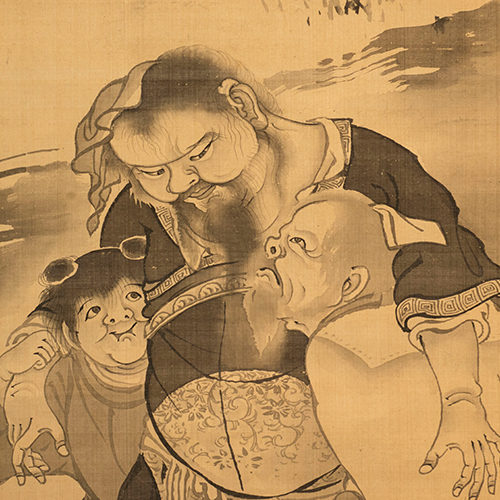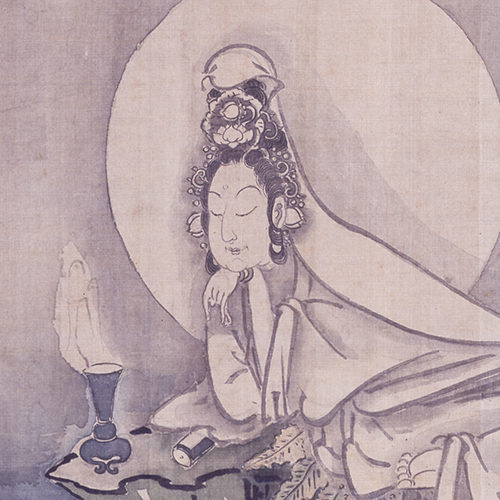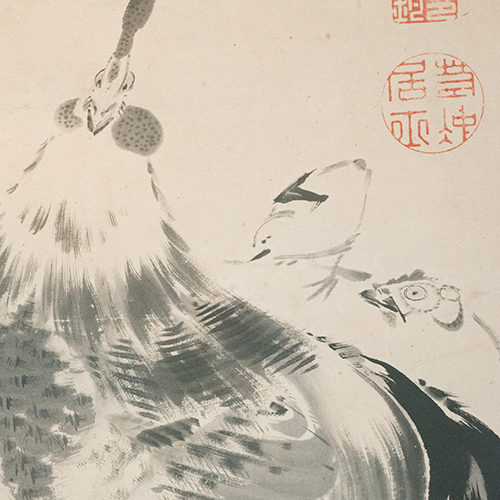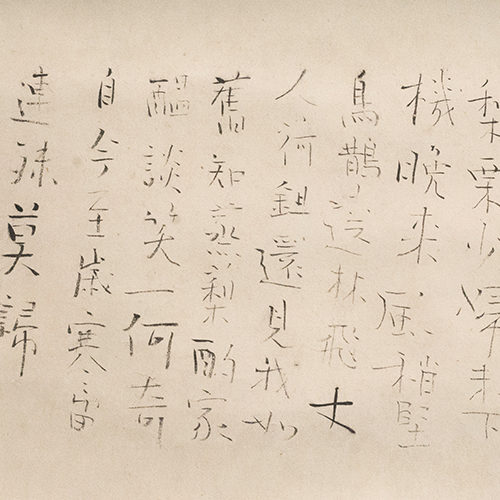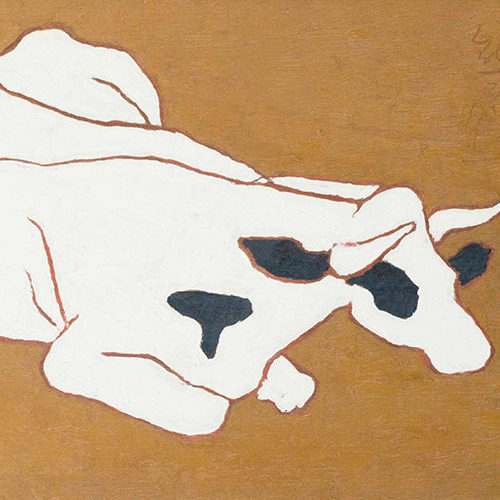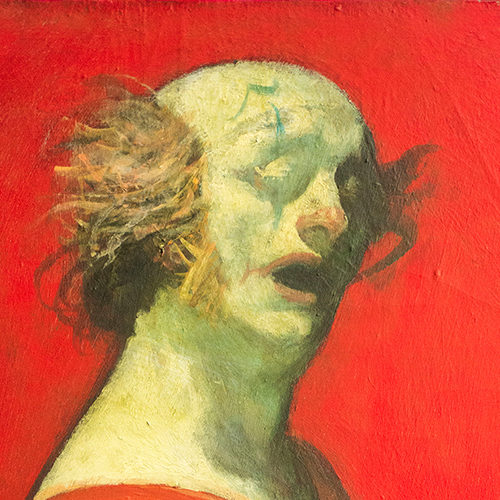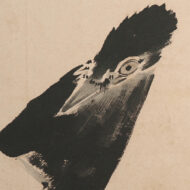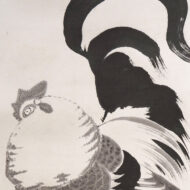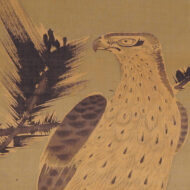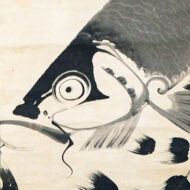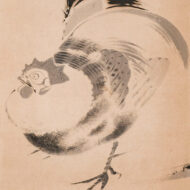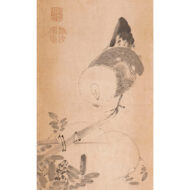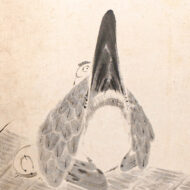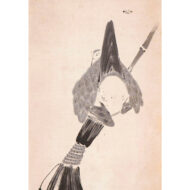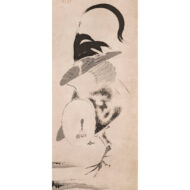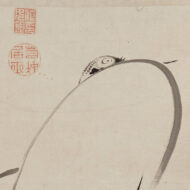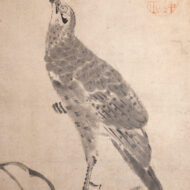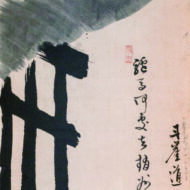
Jakuchū Itō (1716-1800) was a painter in Kyoto in the mid-Edo period.
Jakuchū is well known as a most representative painters of Edo art, due to his eccentric motifs which had never been seen in Japanese painting before and unique composition of his paintings.
His name is “Jokin” and his characters are “Keiwa”. He was also known as “Tobei-an,” “Beito-o,” “Shin’en-kan,” and “Nishikigai-koji. He was born as the eldest son of “Masuya”, a wholesaler of green grocery in Nishiki-koji, Kyoto, and took over the family business upon his father’s death at the age of 23.
At the age of 40, he passed the reigns to his younger brother, Hakusai, and devoted himself to painting.
In the mid-Edo period in Kyoto, his unique style of painting was unique and highly acclaimed.
After the Great Fire of Kyoto in 1788, he temporarily stayed in Osaka, but spent the last years of his life in hiding in front of Obakuji Temple in Fukakusa, Fushimi Ward, Kyoto.
Click here for a detailed explanation page about the works and life of Jakuchū Itō.
Cooperation in Exhibitions
Gallery Sō cooperated with the following exhibitions.
- Kyoto City Museum of Art “300th Anniversary of Jakuchū’s Birth: Jakuchū in Kyoto, Kyoto of Jakuchū” (in 2016, 31 works were exhibited.)
- Ishikawa Prefectural Museum of Art, “Jakuchū and Kōyō” (in 2018, 3 works were on display.)
- Fukushima Prefectural Museum of Art, “Jakuchū Itō Exhibition in Commemoration of the Great East Japan Earthquake” (in 2019, 20 works were on display.)
Information about the TV program featuring Jakuchū
We have the details of the TV program on Jakuchū Itō “NHK Special Jakuchū: Reviving the Colors of God” – 300 years after his birth, the mystery of the genius painter in Edo -” on Facebook.
https://www.facebook.com/gallery.so1987
![Kyoto [Gallery-So] for purchase, sale, and appraisal of art works](http://gallery-so.net/wp-content/uploads/2020/05/so-logo.png)
